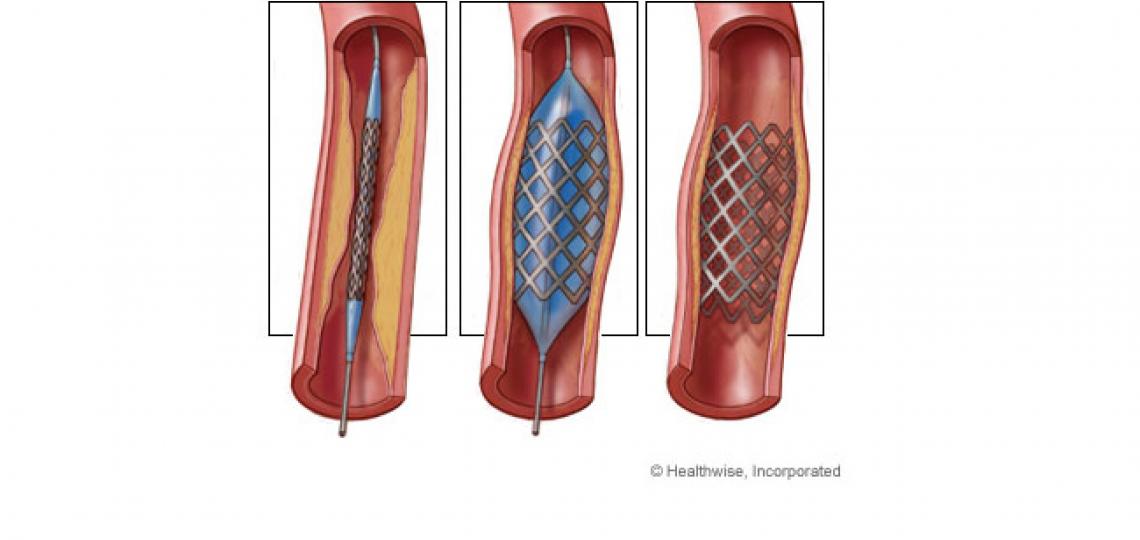What is peripheral artery angioplasty?
Peripheral artery angioplasty is a procedure to treat peripheral arterial disease of the legs. The procedure widens narrowed arteries in the pelvis or legs. It can help blood flow better. This may decrease leg pain or help wounds heal better.
Your arteries can get narrowed by a substance called plaque. Plaque is a buildup of fats in your arteries.
You will be awake for the procedure. You will get medicine to prevent pain and help you relax. First, your doctor will do a test to find narrowed arteries. He or she will put a tiny tube into an artery in your groin or leg. This tube is called a catheter. The doctor moves the catheter through the artery and puts a dye into it. The dye makes your arteries show up on X-ray pictures. This lets the doctor see any narrowed parts of the arteries.
If your doctor finds a narrowed artery, he or she may do an angioplasty. To do this, the doctor uses a catheter with a balloon at the tip. It goes into the artery in your groin or leg. He or she moves the balloon to the narrowed area and inflates it. The balloon presses the plaque against the walls of the artery. This makes more room for blood to flow. The doctor may also put a stent in your artery. A stent is a small tube that helps keep the artery open. It can also keep small pieces of plaque from breaking off and causing problems.
You may need to spend the night in the hospital. For 1 or 2 days after the procedure, you will need to take it easy at home.
How well does an angioplasty for peripheral arterial disease of the legs work?
Angioplasty can restore blood flow and relieve intermittent claudication. Angioplasty may help you walk farther without leg pain than you did before the procedure.
How well angioplasty works depends on the size of the blood vessel, the length of blood vessel affected, and whether the blood vessel is completely blocked.
In general, angioplasty works best in the following types of arteries:
- Larger arteries.
- Arteries with short narrowed areas.
- Narrowed, not blocked, arteries.
What are the risks of an angioplasty for peripheral arterial disease of the legs?
Complications related to the catheter include:
Pain, swelling, and tenderness at the catheter insertion site.Irritation of the vein by the catheter (superficial thrombophlebitis).Bleeding at the catheter site.A bruise where the catheter was inserted. This usually goes away in a few days.
Serious complications are rare.
These complications may include:
Sudden closure of the artery.Blood clots.A small tear in the inner lining of the artery.An allergic reaction to the contrast material used to view the arteries.Kidney damage. In rare cases, the contrast material can damage the kidneys, possibly causing kidney failure.Radiation risk
There is always a slight risk of damage to cells or tissues from being exposed to any radiation, including the low levels of X-ray used for this test. But the risk of damage from the X-rays is usually very low compared with the potential benefits of the test.
What happens when you go home after peripheral artery angioplasty?
Be sure you have someone to drive you home. Anesthesia and pain medicine make it unsafe for you to drive.
You will be given more specific instructions about recovering from your procedure. They will cover things like diet, wound care, follow-up care, driving, and getting back to your normal routine.
© 2016-2019 Healthwise, Incorporated.








 Credit
Credit
